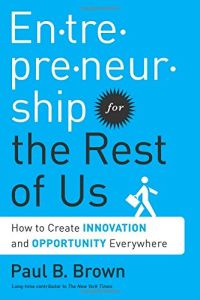Melden Sie sich bei getAbstract an, um die Zusammenfassung zu erhalten.

Melden Sie sich bei getAbstract an, um die Zusammenfassung zu erhalten.
Paul B. Brown
Entrepreneurship for the Rest of Us
How to Create Innovation and Opportunity Everywhere
Bibliomotion, 2015
Was ist drin?
Successful entrepreneurs make little bets and move ahead discreetly in small steps.
Recommendation
Today’s executives need the adaptability of entrepreneurs, those upstart start-up masters who tell customers what they will want tomorrow. For 30 years, seasoned business-book author Paul B. Brown studied entrepreneurs to discover their special attributes, examine their thinking and uncover the secrets of their success. Brown presents his findings, covering the core of entrepreneurship and debunking widely held myths. Brown repeats familiar wisdom, but getAbstract recommends his coverage of the entrepreneurial basics. Especially for those who are new to the topic, he illuminates the entrepreneur’s agility and explains how to put it to work.
Summary
About the Author
Paul B. Brown is a best-selling author and a long-time contributor to The New York Times. He also is a contributing editor to MIT’s Sloan Management Review.




















Comment on this summary